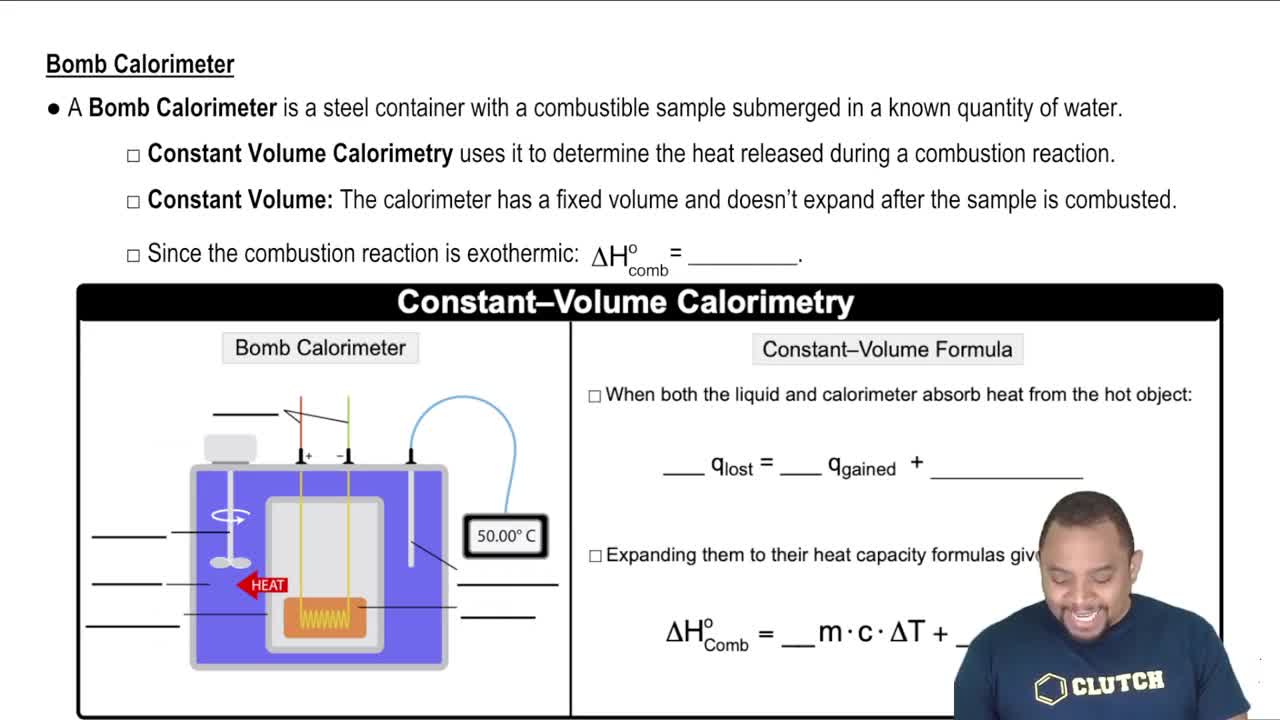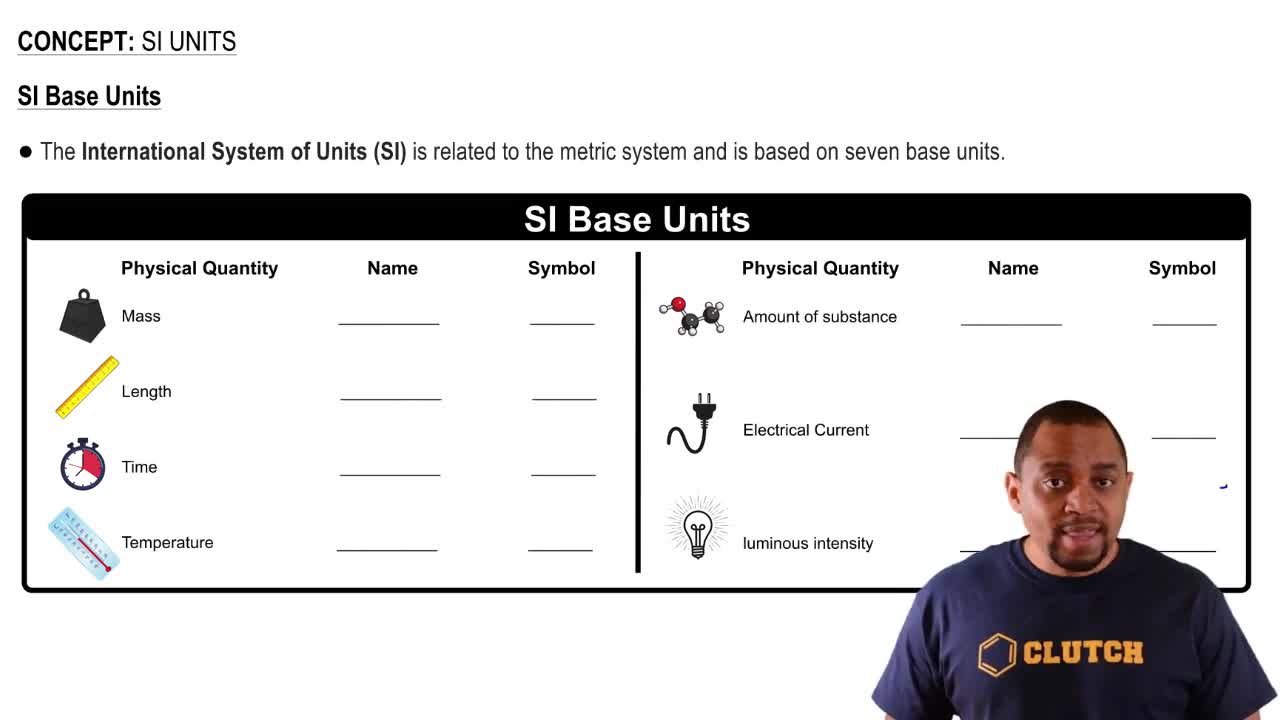Here are the essential concepts you must grasp in order to answer the question correctly.
Work in Thermodynamics
In thermodynamics, work is defined as the energy transferred when a force is applied over a distance. For chemical reactions occurring at constant pressure, the work done by or on the system can be calculated using the formula W = -PΔV, where P is the pressure and ΔV is the change in volume. A negative sign indicates that work is done by the system when it expands.
Recommended video:
First Law of Thermodynamics
Pressure-Volume Work
Pressure-volume work is a specific type of work associated with the expansion or compression of gases. It occurs when a gas changes its volume against an external pressure. The work done is directly proportional to the pressure and the change in volume, making it essential to understand how these variables interact in a chemical reaction.
Recommended video:
Constant-Volume Calorimetry
Units of Work
In chemistry, work is typically measured in joules (J). To convert pressure from atmospheres to pascals (1 atm = 101.325 kPa) and volume from liters to cubic meters (1 L = 0.001 m³), it is crucial to ensure that all units are consistent when calculating work. This ensures accurate results in thermodynamic calculations.
Recommended video:
 Verified step by step guidance
Verified step by step guidance


